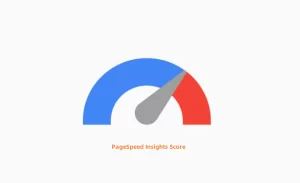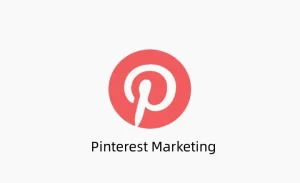Pinterest has emerged as a powerful platform for marketers, combining the features of a search engine and a social media network.
With over 2 billion searches every month, Pinterest offers immense potential for businesses to drive traffic, improve conversions, and build their brand.
In this blog post, Dolma will explore the anatomy of Pinterest, the benefits of Pinterest marketing, and the essential steps to develop an effective Pinterest marketing strategy.

Why you need to use Pinterest for marketing
Pinterest is a highly effective platform for marketing due to several reasons:
- Visual Appeal: Pinterest is a visually-driven platform where users can discover and save images, videos, and infographics known as “pins.” By leveraging high-quality visuals, businesses can capture the attention of users and drive engagement.
- Increased Brand Exposure: Pinterest has a massive user base, with millions of active users worldwide. By utilizing Pinterest for marketing, businesses can tap into this large audience and increase their brand exposure. When users save or share pins, they are essentially endorsing the brand, which can lead to increased visibility and reach.
- Targeted Advertising: Businesses can narrow down their audience and ensure that their content is seen by the right people using features like interest targeting, keyword targeting, and demographic targeting. By targeting conversions, you can achieve better return on investment (ROI) and higher conversion rates.
- Increased Website Traffic: Each Pinterest pin includes a link back to the source, which is usually the business website. Pinterest is not just a visual discovery platform, but also a traffic driver. Businesses can increase leads, sales, and overall business growth by optimizing pins and directing users to relevant landing pages.
- Longevity of Pins: Unlike other social media platforms where posts have a short lifespan, pins on Pinterest have a much longer shelf life. Pins can continue to be discovered, shared, and engaged for months or even years after they are initially posted. This long-lasting visibility means that the marketing efforts put into creating and optimizing pins can continue to generate results over an extended period.
By utilizing Pinterest effectively, businesses can enhance their brand presence, drive engagement, and achieve their marketing goals.
Developing Your Pinterest Marketing Strategy

A well-thought-out Pinterest marketing strategy is essential to maximizing its benefits. Here are seven steps to help you get started:
Step 1: Research the Trends
Staying ahead of emerging trends is crucial on Pinterest. While focusing on your core categories, research successful content and trending topics to create original, unique pins for your customers.
Pinterest Trends, a powerful tool, allows you to explore popular posts and keywords, enabling you to optimize your content and design compelling pins.
Step 2: Conduct Keyword Research
Keyword research is vital to optimize your pins for search on Pinterest. Compile a list of relevant keywords based on your trend research. People discover most pins through keywords, so incorporating these keywords into your pin descriptions, titles, and hashtags will increase their visibility and reach.
Step 3: Prepare Your Business Profile
Create a professional-looking business profile on Pinterest to build a strong presence and attract targeted followers. Choose a high-resolution logo and banner, write an attractive bio, and create featured boards that align with your brand and offerings.
Use your keyword research to influence your board names, profile descriptions, and other elements of your business profile.
Step 4: Research Your Competitors
Analyze their presence on the platform, the type of content they share, and how they organize their boards. This research will help you understand their strategies and identify opportunities to differentiate yourself.
Step 5: Understand the Types of Pins Available
Pinterest offers various types of pins, each with its benefits. Familiarize yourself with these types and choose the ones that work best for your business:
- Product Pins: Display up-to-date details about your products, such as price, availability, and descriptions.
- Story Pins: Tell engaging stories through step-by-step guides, DIY projects, recipes, and more.
- Video Pins: Utilize videos to showcase your products and capture users’ attention.
- Rich Pins: Provide additional details and context around your pins, enhancing their discoverability.
- Article Pins: Use pins to highlight headlines, titles, and descriptions of your articles or blog posts.
- Shop the Look Pins: Enable users to find and purchase products directly from the pin.
Understanding the different pin types will help you create engaging and effective pins that resonate with your target audience.
Step 6: Create a Pinterest Marketing Plan
Develop a comprehensive Pinterest marketing plan that outlines your content strategy, pinning frequency, and goals.
Schedule content releases, maintain visual consistency across your Pinterest account and landing pages, and consider joining relevant community boards.
Your plan should incorporate content creation, lead management, ongoing user research, and the use of SEO website analysis tools to track your efforts.
Step 7: Execute, Track, and Refine Your Strategy
Put your Pinterest marketing plan into action and promote your Pinterest Business Account across various online platforms.
Monitor the performance of each pin, review analytics, and refine your approach accordingly.
Continuously track your efforts and make necessary adjustments to optimize your pins and content for higher conversion rates. It’s crucial to provide relevant and valuable information or products to your audience consistently.
Pinterest Marketing Tips Sharing
To further elevate your Pinterest marketing strategy, consider implementing the following hacks and tips:
- Create Multiple Variations of the Same Pin: Test different images, copy, titles, and hashtags to keep your content fresh and appealing.
- Optimize Pin Visuals: Ensure your pin visuals are relevant, fit nicely in the feed, and align with your brand. Use vibrant colors, contextual backgrounds, and descriptive text to catch users’ attention.
- Leverage Boards: Think of boards as shelves in a store and pins as the inventory. Create relevant boards and organize your pins strategically. Use keyword-rich names and descriptions to enhance search visibility.
- Focus on Engagement: Craft pin descriptions that are helpful, detailed, interesting, and actionable. Encourage users to click through to your website or blog. Use sensory-related words, positive sentiments, and calls to action to generate higher engagement.
- Monitor Performance: Regularly analyze the performance of your pins and refine your content accordingly. Experiment with different pin variations, keywords, and strategies to identify what works best for your business.
Best Pinterest Advertising Marketing Strategies
Based on the top 5 Pinterest advertising strategies mentioned in the search results, here are the most effective strategies for marketing on Pinterest:
- Set up a Pinterest business account: To advertise on Pinterest, create a business account to access the advertising features and tools.
- Determine your desired outcome: Clearly define your advertising goals and objectives. Whether it’s driving website traffic, increasing brand awareness, or generating conversions, knowing your desired outcome will help you create effective campaigns.
- Establish marketing objectives: Set specific, measurable, achievable, relevant, and time-bound (SMART) marketing objectives for your Pinterest advertising campaigns. This will provide direction and help you track your progress.
- Set a campaign spending plan: Determine how much you are willing to spend on your Pinterest advertising campaigns. Pinterest offers different advertising options, including cost-per-click (CPC) and cost-per-impression (CPM), so choose the one that aligns with your budget.
- Target your audience effectively: Proper targeting is crucial for successful Pinterest advertising. Identify your target audience based on demographics, interests, and behaviors, and use Pinterest’s targeting options to reach the right people.
Remember, these strategies can be further enhanced by following additional expert tips and best practices for creating high-performing Pinterest ads.
How to measure Pinterest marketing success
Setting clear objectives and tracking key performance indicators (KPIs) is crucial to measure the success of your Pinterest marketing efforts.
Here are some useful Pinterest objectives and corresponding KPIs:
- Link Clicks: Measure the number of clicks on pins leading to your website or landing pages. This KPI is relevant for driving traffic and conversions.
- Impressions: Track the number of times your pins appear in users’ feeds. This metric is valuable for increasing brand awareness and reach.
- Closeups: Monitor the number of times users zoom in on your pins. This KPI indicates user interest and engagement with your content.
- Saves: Measure the number of times users save your pins to their boards. This KPI reflects the value and relevancy of your content.
- Engagement: Track overall engagement metrics such as comments, likes, and shares. This KPI reflects the level of interaction and interest generated by your pins.
Depending on your specific goals, the weight placed on these KPIs may vary. It’s essential to align your Pinterest marketing objectives with your overall business objectives and regularly analyze the performance to make data-driven decisions.
Conclusion
Pinterest offers a unique platform for marketers to drive traffic, improve conversions, and build their brand.
By developing a comprehensive Pinterest marketing strategy, businesses can leverage the visual power of Pinterest to achieve their marketing goals. From conducting trend research and keyword analysis to optimizing pin visuals and analyzing performance, each step contributes to a successful Pinterest marketing campaign.
With careful planning, consistent execution, and ongoing optimization, businesses can unlock the full potential of Pinterest and connect with their target audience effectively.


